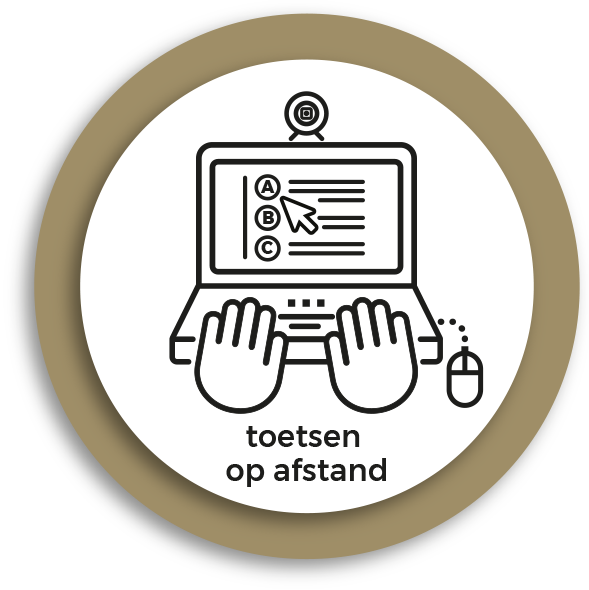Definition
With projects and products, students can apply what they have learned in an active and practical manner, and within set boundaries. This improves their understanding of the subject. Projects and products are suitable for assessing whether a student can create and apply, analyse and evaluate knowledge.
However, projects and products are less suitable for assessing whether a student has a broad knowledge base. In practice, projects and products are often combined with other types of assessment that are more suited to this, such as exams with open-ended and/or closed-ended questions. It may not always be necessary to test a student’s broad knowledge base separately, for example if it was assessed in a previous course, or if it was sufficiently addressed as part of the project/product.
A project or product is often combined with an oral exam or presentation.
Online
With a project or product, a student carries out a clearly-defined assignment. Projects often result in a product such as an analysis, recommendation, design, final product or essay:
*Analysis The student analyses a situation, …
Approach
Preparation
The preparation required for online projects and products does not differ very much from that required in ‘regular’ education. You first need to identify which learning objectives are to be achieved by the student. You …
Tips
Organise an online peer feedback session well before the submission date for the final draft version of a project/product. Using the assessment form, the students can give each other feedback on their products. This saves you time, as many common mistakes will be picked up and solved by the students.
*Facilitate and encourage self-management in students as they work on a project. For example, have students set themselves personal goals in their project and let them reflect on these goals. *Before providing feedback on a project or product, you could first organise a peer feedback session. Make sure that the students have a copy of the assessment form and let them give each other feedback based on the form. The students learn a lot about their own performance through peer feedback, improve their capacity for self-reflection and inspire each other. See this brochure by Inholland (in Dutch) for more information on organising peer feedback. *It also helps to motivate students if they carry out projects and products for clients outside the university setting. This also helps them to develop general interdisciplinary skills. *For more inspiration on written assignments, take a look at this information page from the VU. *Students can cheat on written assignments by copying text from previous students or from the internet. You should therefore use anti-plagiarism software. A wider variety of projects and products also makes it more difficult for students to copy each other’s work. If you do use a list of subjects for students to choose from, make sure to update it regularly. *Ask the students to indicate which aspects of their project/product they would most like to receive feedback on, as this encourages their capacity for self-management. Of course, as the examiner you may also choose to provide feedback on other aspects. *Ask the students to submit a self-assessment based on the assessment form as part of their project or product, so that they learn to reflect on their own work. If you also ask them to indicate where the information can be found relating to each assessment criterion (e.g. by referring to the relevant section of the report), you can save yourself some marking time. *In a group assignment, some students may contribute more to the group process than others. It is usually best to have students agree on the quality of their work at the start, and to remind them of this as they go along, as this can help to prevent any problems. You can also organise the assignment so that students are reliant on each other, but this can be difficult. *One pitfall with group assignments is that the students compensate for each other’s weaknesses. However, this does not have to be a problem, as it also applies to the ‘real’ world. It is however something to keep in mind when deciding whether to set an individual or group assignment, and when incorporating the learning objectives into the assignment. *For students with a learning difficulty such as ADD or ADHD, it is very important to make sure that expectations and submission deadlines are communicated clearly. We suggest that these students are asked to submit interim products, so that they have a clear idea of their progress.
References
- VU guidelines on variations on written assignments.
- Toetsen in het hogeronderwijs (Assessment in higher education, in Dutch) (Van Berkel, Bax, and Joosten-ten Brinke 2017), about the importance of feedback in the learning …

